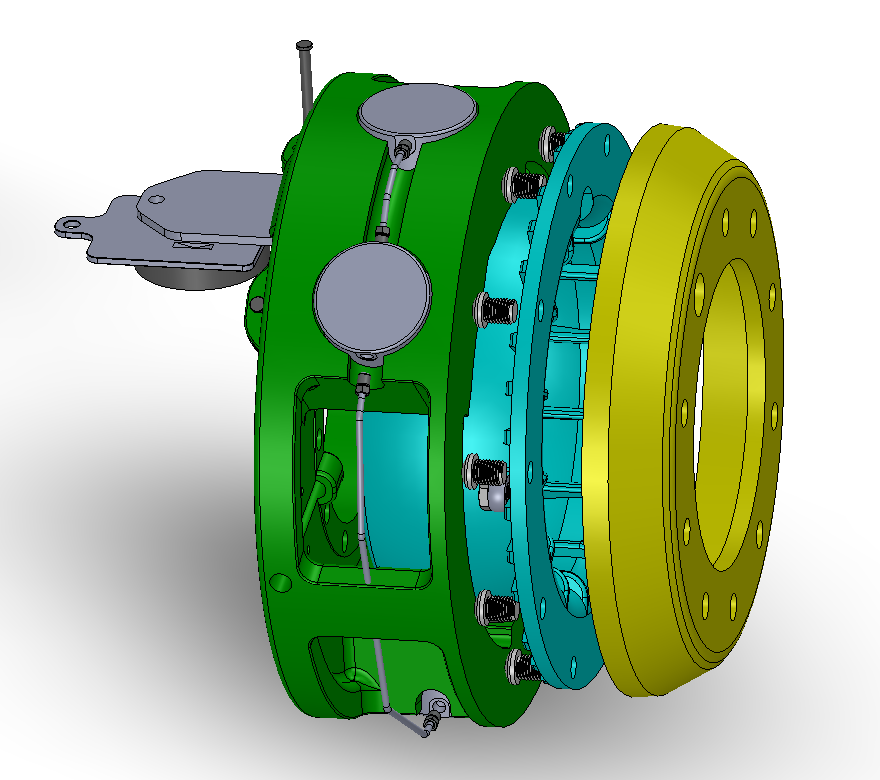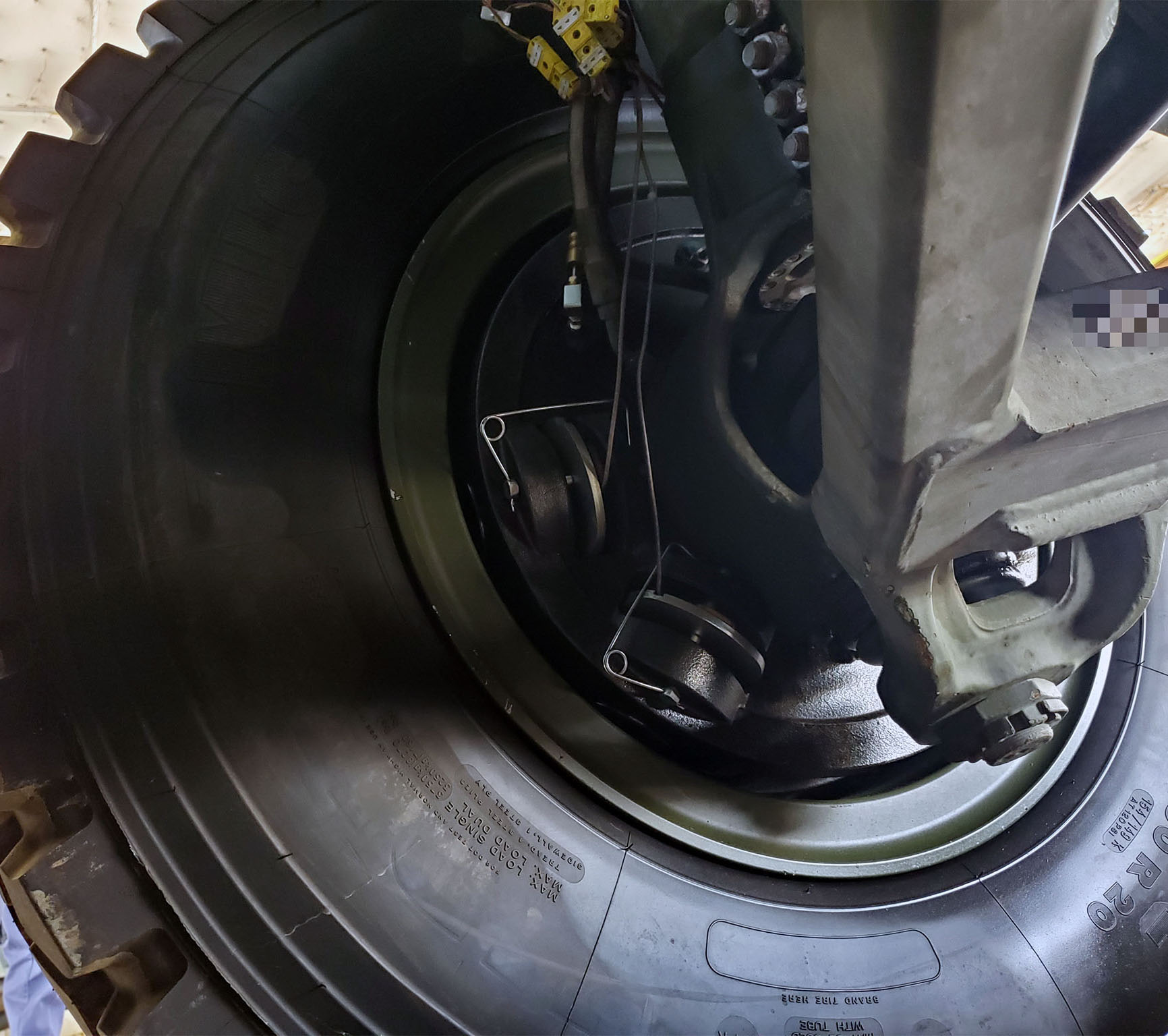
Validation through Dyno and Track testing
The air-over-hydraulic sphere brake kit bolts-on to existing wheel-end assemblies integrating with ABS and CTIS. Through two concurrent defense contracts with RCCTO and MCSC, we’ve successfully certified the sphere brake through dyno testing. We’ve designed, manufactured, and installed commercial grade sphere brake kits onto the DVH Stryker and MTVA1P2 vehicles.

User-Centered Design
The sphere brake uses mechanical, hydraulic, or pneumatic pressure to compress hemispherical brake pads against a spherical brake surface. This generates more power with a smaller effective diameter compared to disc and drum brake systems. It currently takes 3 days and at least 15 tools to service brakes on ground and air vehicle platforms. The sphere brake cuts this down to only 20 minutes and you only need one tool, YOUR HAND. We know first-hand that this kind of value significantly increases unit readiness while substantially reducing total cost of ownership across fleets.

Warfighter Touchpoints
“We were able to install brake pads in under 2 minutes per wheel-end without any tools.”
– ATEC Maintenance Technician
“We fight for 1 pound and kill for 2, what do you think we’ll do for sphere brakes?”
– Airline Executive
“I want these on my truck!”
– SGM Redstone Arsenal

Options, Options, Options
By design, the sphere brake is lighter per wheel-end than existing drum and disc brake systems, shedding between 400 to 500 pounds off the entire vehicle. This affords vehicle integrators a plethora of OPTIONS!
What would you do with and extra 500lbs?
- Increase Payload like Medical Suppliers and Ammo?
- Increase Soldier Lethality?
- Increase Fuel Efficiency?
- Increase Force Protection?
- Increase Mean-Time-Between-Failure?



